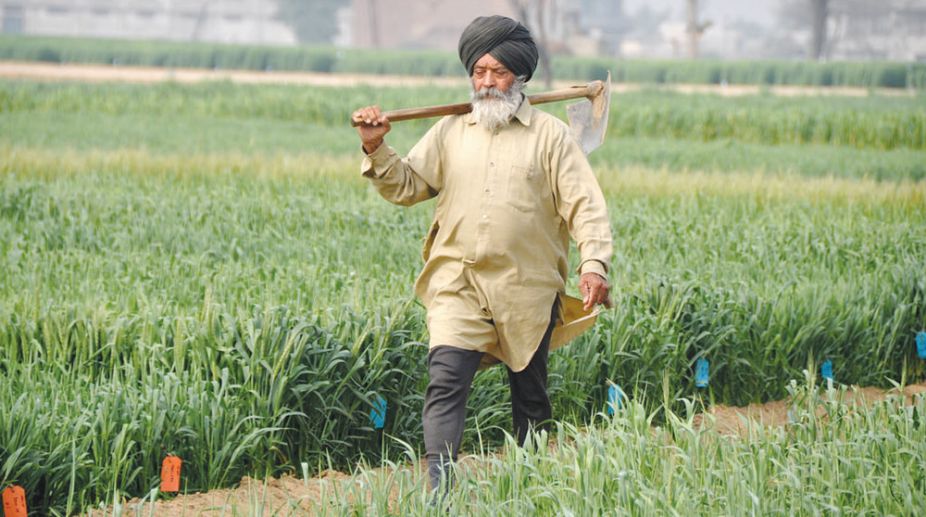Election time in every state is the time when the populist issues take center stage – whether relevant or irrelevant. Sadly, deep social and political problems are overlooked and public fails to bring it to the table with their leaders. However, people of Punjab should not ignore it further. The key uncertainties lying ahead have been aggravated by the consequences of pandemic, climate change, demography, economics, political climate, artificial intelligence and can spiral out of control if unaddressed in the coming times.
Here is my analysis:
Agrarian Crisis and Cultural Crisis
While Green revolution might have sustained the country, it has drained Punjab. It has depleted the soil of its nutrients, increased dependence on chemical fertilizers and pesticides. The traditional crop diversification has disappeared from the state, leaving rice-wheat monoculture which is now an extremely dangerous practice for the state with rising air pollution and depleting aquifers. Post green revolution, the cropped area for pulses had reduced from 19% to 0.4% and for oilseeds from 3.9% to 0.5% from 1960-61. This needs immediate attention because these crops are important for fertility of the soil. Today, 50% of Punjab’s soil is carbon, with only 0.3% of organic carbon. Soils with less than 1% organic matter are found in desert. The farm laws that were needed with MSP to woo the farmer out of this rice-wheat monoculture have now altogether left the farmers helpless. The public and legislators need to come together with models and strategies to face this foreseeable crisis which no one wants to talk about.
The wealth that ushered in the state due to green revolution has eventually led to a cultural crisis too. Where once every farmer began his sowing season with utter respect and regard, throwing five fists full of seed up in the air in gratitude and love of god, nature and all good things; now the next generation of farmers has loud screeching music on their tractors, forgotten traditional practices and have lost the muscle for farming. The good old Punjabi culture is slowly dying.
Hollow Economy
The state of Punjab needs a solid engine working for it to survive. It is principally an agricultural economy which is on the brink of crisis. With state having water depletion issues, electricity deficit status, skilled workforce shortage – the future looks dismal until a major booster model is put in place to flesh its hollow economy. With Union government’s new policies the economy of the state will further weaken. It is importing pulses and oil seeds to maintain the demand supply difference in the domestic market, but not ready to tap into Punjab’s potential in catering the increased domestic demand of oilseeds and pulses in India by offering better incentives in form of MSP for these crops.
On the other hand, the process of de-industrialization across Punjab that took place was not stopped in its nascent stage. Not much effort had been made to retain the small or large scale industry which could have generated employment in the state. According to Annual Report of Periodic Labour Force (2017-18) Punjab has an unemployment rate of 7.8% which is higher than all India unemployment. One of the major reasons for loss of competitive industry and deep in debt economy is the cross-subsidization of farming, farm loan waivers and power subsidies. And yet, every election season is fought on which party will provide maximumn FREE power units. For how long is this viable? It is indeed a sad situation.
Misplaced Priorities
Every election season the blame ball starts to roll from one party to another. The incumbent Congress ministers in an effort to save their own faces before beginning the election campaign, have brought up the Bargari issue blaming it on the Chief Minister. The CM is so embroiled in this infighting that the state seems to be going to utter neglect. On the other hand, Akali Dal is milking the situation by blaming the shortage of electricity on the policies of Congress government in the state. Not staying behind, AAP makes tall claims of providing free electricity upto 300 units which is highly unlikely in the current scenario without overburdening the already burdened financial exchequer of the state. One should be mindful of the fact that Punjab and Delhi’s electricity situations are very different due to its pre – purchase agreements.
Everything from farm bills, farm loans, electricity shortage to Kotakpura Bargari sacrilege has become the hot election issue. However, topics like Buddha Nala, environmental costs, effluent treatment plants, sustainability of farm loans and solar panel subsidies – that really matter to the future of Punjab have still not found a voice. The politics of vote bank always takes over serious issues that all political parties willfully ignore – not understanding that if these issues aren’t looked into they are responsible for the onset of catastrophic times.
However, are politicians solely responsible for not talking about it when the public – the people – are not ready to raise these issues and seriously take measures for it? The truth is the day people of the state put the right issues on the table with their elected leaders, all political parties will be at their service to do the right thing.





